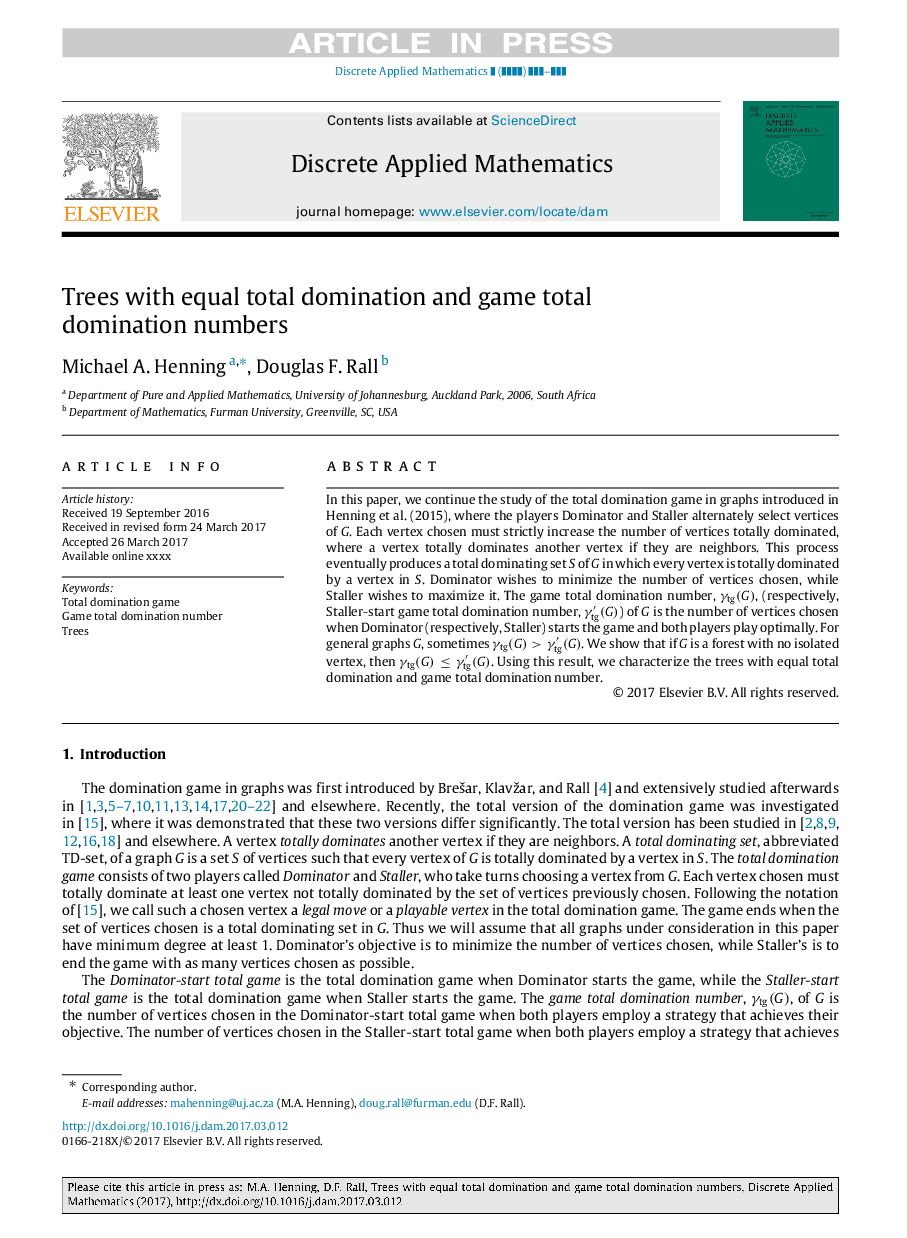| Article ID | Journal | Published Year | Pages | File Type |
|---|---|---|---|---|
| 4949614 | Discrete Applied Mathematics | 2017 | 13 Pages |
Abstract
In this paper, we continue the study of the total domination game in graphs introduced in Henning et al. (2015), where the players Dominator and Staller alternately select vertices of G. Each vertex chosen must strictly increase the number of vertices totally dominated, where a vertex totally dominates another vertex if they are neighbors. This process eventually produces a total dominating set S of G in which every vertex is totally dominated by a vertex in S. Dominator wishes to minimize the number of vertices chosen, while Staller wishes to maximize it. The game total domination number, γtg(G), (respectively, Staller-start game total domination number, γtgâ²(G)) of G is the number of vertices chosen when Dominator (respectively, Staller) starts the game and both players play optimally. For general graphs G, sometimes γtg(G)>γtgâ²(G). We show that if G is a forest with no isolated vertex, then γtg(G)â¤Î³tgâ²(G). Using this result, we characterize the trees with equal total domination and game total domination number.
Keywords
Related Topics
Physical Sciences and Engineering
Computer Science
Computational Theory and Mathematics
Authors
Michael A. Henning, Douglas F. Rall,
